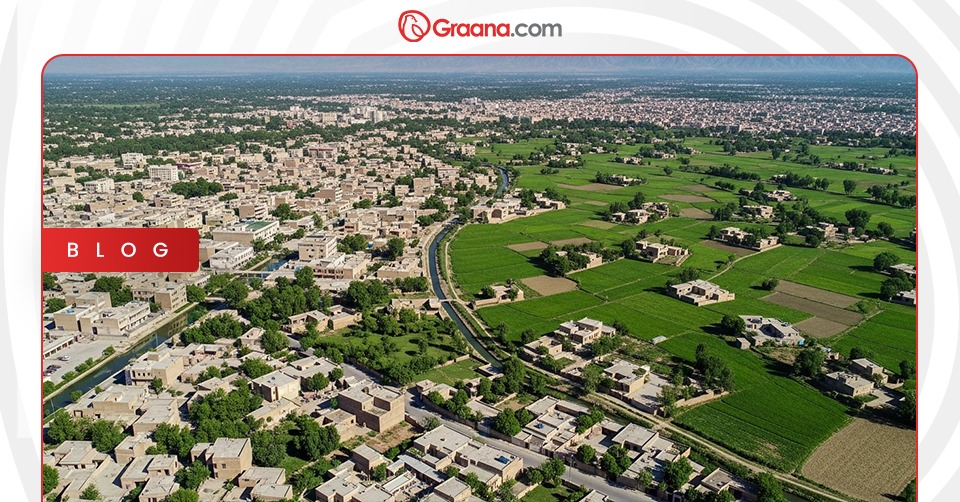Imagine a building that is a manifestation of automation, from its architectural designs, building layouts, and its construction; the building is a negation of labour-intensive methods and harnesses efficiency. Such buildings no longer exist in theories rather are becoming a reality and changing the landscape of the real estate sector along with defining new practices in the construction industry. It remains no wonder that technology is penetrating the real estate sector and at the same time creating wonders in the real estate sector.
As an extension of this notion, Graana.com discusses 3D printing -the latest manifestation of technology that is going to be explained in this respective blog.
Transition
Personnel who are currently attached with the real estate sector and particularly the domain of design and construction will be aware of the significance of 2D CAD designs however, Building Information Modelling (BIM) is the latest concept and surpasses 2D CAD design with its ability to design 3D models and imageries. Formulating a relation with 3D printing, BIM serves as a good source for the construction of buildings through 3D printing technology.
What is 3D printing?
Also held synonymous with ‘additive manufacturing, 3D printing pertains to the creation of 3D geometries or models which are produced after giving the input in the form of BIM. The geometries are produced layer by layer and are in line with the given input. Simply put, 3D printing is about the creation of 3D models. In this background, 3D printing is proving useful at a commercial level where efficiency and resource management are the core principles. As a result, the 3D printing equipment is replicating the conventional methods of construction which had to involve intensive labour along with enhancing efficiency.
By this time most of the readers will be wondering how complex geometric structures can be developed using 3D printers. This may sound candid, but simply put 3D printing instead of using inks the 3D printers are extruding concrete for the creation of buildings, rather than manually stacking bricks or blocks a robotic arm extrudes concrete to develop 3D buildings.
Similarly, for the creation of complex metallic structures companies have created different machines which use welding techniques along with employing industrial robots that are fed with instructions particularly in the form of BIM.
3D Printing and its Significance
Almost every industry is moving towards automation to explore the new opportunities created by technology similarly, 3D printing is becoming a new tool of progression by reducing the cost, increasing time efficiency, and the ability to create complex structures that cannot be created to perfection by human labour.
Automation of the Industry
3D printing will open a new era of automation in the real estate sector. With the inclusion of 3D printing, risks associated with the construction in the form of implementation and resource management will be mitigated. Across the world, the share of the construction sector to the GDP of different countries is 9% and with the incorporation of 3D printing, the share in GDP will likely increase. Similarly, the automation of the industry will also reduce construction waste by 30-60%.
Affordable Housing
One of the most important tenets of 3D printing is affordable housing. As mentioned earlier, 3D printing can reduce construction waste by 30-60% thus also reducing the construction cost of housing. Affordable housing owes to the automation of the construction industry which can help to overcome the housing deficit in the developing countries and also increase the extent of housing to the low-income groups.
Such an example can be taken from China where a house constructed using 3D technology cost less than $5000.
Reducing Timelines
From the perspective of a client, meeting timelines and deliverance of the real estate project is what enhances credibility. The inclusion of 3D printing in the real estate sector will reduce the timelines of projects and will give real estate and construction companies a comparative advantage. Moreover, with reduced timelines, businessmen will be able to operationalise their projects in less time. Similarly, from the business point of view, reduced costs and timelines can increase profits.
Enhancing Efficiency
The introduction of 3D printing to the real estate and construction sector will also enhance the efficiency of the whole construction procedure. In Dubai, the world’s largest building created by utilising 3D technology consumed less material than usual and reduced the waste by 60%. Similarly, the labour used in the construction of the building was half than the labour used in conventional construction and the duration of the construction was two months.
Implementing Complex Designs
One of the advantages of 3D printing is that it can implement complex designs which cannot be implemented by conventional labour. Rectilinear designs dominate the contemporary construction industry; with the inclusion of 3D printing, the design will enter another phase marked by curvilinear layouts which are more in strength and durable. Moreover, the new patterns will open a new gateway in the realm of designs.
Reducing Carbon Emissions
3D printing will also help to reduce the carbon emissions in the construction industry which is one of the major contributors to the increasing carbon footprints. In other words, it can be said that 3D printing can also act as a tool for mitigating carbon emissions which can have a positive impact on the environment.
Graana.com is breaking the conventional methods of the real estate sector by incorporating practices that are backed by technology and setting a new precedence in the industry. By the amalgamation of the technology, a gateway of new opportunities will be opened which will also benefit the sectors associated with real estate.
Read More
The Top 15 Construction 3D Printers of 2022




